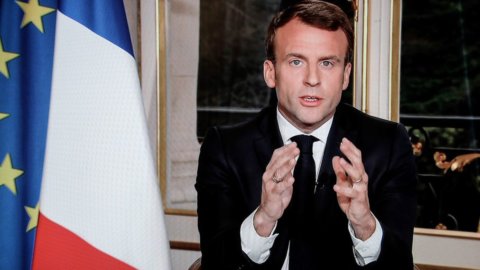One could say that right now, on the eve of the Milan fashion shows, the only certainty is uncertainty. Many unknowns overlook the future of Italian fashion which, according to the estimates of Michele Tronconi, president of Sistema moda Italia (Smi), should in any case close the year with overall growth of around 4%. Growth which, however, is largely driven by the price effect, ie by the sharp increase in the cost of raw materials and therefore of price lists.
The data just released by the Smi research office relating to foreign trade of textiles and fashion in the first six months of the year indicate an increase in exports of textile products of 13,8% in value (to 5,2 billion euros ) which however stops at +5,7% if calculated in tons. The same goes for clothing: +14,3% in value up to almost 8 billion euros, +7,7% in quantity. The balance remains substantially unchanged at just under 3 billion, given that the same argument applies to imports, explains Tronconi.
Does this mean that if prices stabilise, they risk sagging next year? Fear exists, but it doesn't necessarily happen that way. First of all, because in emerging countries the number of nouveau riche continues to grow, all potential customers of status symbols and therefore of made in Italy. Which in this sense maintains an important and recognized value, underlines Michele Norsa, CEO of Ferragamo.
From the half-yearly reports of the major listed brands, which record excellent results, it clearly emerges that turnover today is made abroad, or rather in the Far East. The Asia-Pacific area is the first market in terms of revenues for Ferragamo and Prada. Norsa is convinced of this: despite the enormous volatility of the markets, the luxury sector today is able to hold more than it was a few years ago, not only because there are more new riches but also because luxury consumers, such as the Chinese, they are less "local", they move more around the world. A forecast confirmed by HSBC which estimates a growth in demand for luxury goods of 15% this year and 11% next year.
What instead seems destined to suffer, and has already begun to lose some blows, is the medium and medium-low range of the fashion market, more linked to internal consumption, inevitably destined to suffer the repercussions of a substantial loss of income. It is deprived, at this moment, of any possibility of help in seeking outlets abroad. The closure of ICE (the Institute for Foreign Trade) without the creation of a replacement body has meant that now all funding for promotion is blocked (apart from something from the chamber system). And this while France and Germany, our direct competitors on the international markets, have doubled or tripled the funds for promotion abroad.
Reviving consumption at home today does not seem easy, on the contrary, the only hope for Tronconi is given by non-residents. That is the tourists. . Selling an emotion is also used to sell clothes or food. But Italy does not seem to be too aware of it.
The turnover of fashion is now made in Asia. X-ray of the sector on the eve of the fashion shows a
It is the lifeline for Made in Italy, on the eve of the Milanese fashion shows – For Ferragamo and Prada, the Far East and its surroundings represent the first market – For the rest, a good deal of uncertainty – At the end of the year, the sector should register a growth of 4% but above all due to the strong increase in the cost of raw materials and, therefore, in price lists





